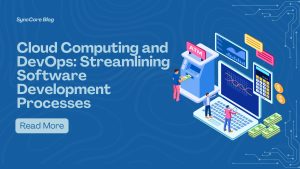Table of Contents
Educational Sector Needs Cloud Backup
Educational institutions must adapt to a new economic model that calls for a different infrastructure as more classroom lessons and educational courses are given online. IT services are no longer only available for delivery on-site. Since interactive courses and videos are used in online classes, additional bandwidth is needed. Online activities can suffer from latency problems when students wait for assignments to download or lectures to retrieve them.
Budget restrictions affect educational institutions just like they do every other organization. That entails figuring out methods to save expenses without sacrificing services. Examining stored data is one approach to cutting costs. Institutions should assess their current storage options to see if there are any opportunities for cost savings.
Not all data is equal in value, and not all storage is equal in price. Low-cost storage options provided by cloud storage can enhance services like data resiliency and better end-user experiences.
Resilience
Data must be secure and easily accessible. That necessitates availability for educational establishments around-the-clock. Many students don’t study during conventional business hours, after all. Organizations should have business continuity and disaster recovery plans to ensure resilience.
Disaster recovery
Any IT infrastructure disturbance can spiral out of control in today’s digital world. Catastrophic occurrences like storms or gale-force winds can destroy or topple power lines, leaving people without electricity for days. However, a cyberattack is a modern tragedy that occurs the most frequently.
Cybersecurity
Cyberattacks have risen dramatically in the last year. An attempt is made every 11 seconds, according to estimates. Even more concerning is the percentage of educational institutions that have been subjected to a cyberattack in the previous year.
- 80% of higher education facilities
- 76% of secondary schools
- 41% of primary schools
Although not all attacks were successful, it demonstrates cybercriminals’ increased interest in the education sector.
Two 2020 cyber events highlight supply chain attacks’ impact on businesses. The SolarWinds compromise, which reverberated throughout the US government, and the Blackbaud hack, which targeted the educational sector, were two examples. In both cases, cybercriminals gained access to data by breaching a supplier. It wasn’t until much later that organizations were informed that their data had been compromised. Over ten UK universities and colleges were affected, with alumni payment information compromised at the University of Birmingham.
Cloud backups
Backup systems are frequently stored on the same network as the live system, despite best practices recommending an off-site location. Ryuk is ransomware that prioritizes mitigation processes. Because detecting these processes is more nuanced, viruses can eliminate recovery methods before locking the live system. This method makes it difficult for a company to recover from an infection without paying a ransom.
Storing backups in the cloud ensures that a backup is available in the event of a disaster. System backups can be quickly restored, and operations can continue while repairs are completed. Using cloud disaster recovery software facilitates backup and recovery, reducing downtime and ensuring a positive student experience.
Cost savings
Knowledge takes up a lot of room. Most educational institutions keep massive amounts of data. There are student records, instructional data, and research data. Then there’s the business of education, which includes accounting, facility management, and fundraising. All of that data is typically kept on-site in large computer rooms or data centers.
Data storage in institution-run computer rooms becomes costly. As enrolment grows, so does the demand for more servers. The cost of a server includes more than just the hardware. To avoid unexpected failures, equipment must be maintained, which may include performance monitoring. Cooling costs rise as more hardware generates heat, as do utility costs for maintaining the environment, even when school is not in session.
There are labor costs in addition to server costs. More servers necessitate the addition of more people to monitor and maintain them. Organizations do not have to worry about labor costs when using a cloud-based solution. They are not required to purchase, maintain, or monitor equipment. The area can be used for research, administration, or education. Using a cloud backup solution is a low-cost way to protect critical data.
Improved experience
Educational institutions should think about moving data storage to the cloud and keeping backups. Cloud-based solutions improve the student experience. Students can now access information much more easily — all they need is a device and an internet connection to begin working at any time and from any location. The same is true for faculty, who can easily review students’ work.
Maintenance costs for on-site equipment decrease as fewer servers are required, resulting in lower utility bills and fewer maintenance calls. Furthermore, if users do not latency issues can be reduced if users do not need to access the campus network’s outdated infrastructures that are incapable of supporting the increased bandwidth required for 21st-century interactions. The change may reduce end-user frustration when attempting to connect to the network.
Strategy
The institution and the information determine where and how data is stored. It is not a one-size-fits-all solution. Every organization requires a data storage strategy. Some facilities, for example, begin with on-premise backup and then transition to a hybrid model before becoming cloud-native.
Hybrid
A hybrid cloud architecture enables organizations to keep some data on-premises while moving the majority to the cloud. Data protected by privacy laws may be kept locally to ensure compliance, though cloud storage providers provide industry-standard security measures. Cloud backup data, for example, is encrypted.
All backups should be stored in the cloud, regardless of how the live system is configured. A cloud-based backup solution provides peace of mind to schools and educational facilities. They are confident that their information is secure.
Cloud-native
The cloud becomes the IT infrastructure in a cloud-native environment. Because data is moved to the cloud, businesses do not have to worry about hardware purchases or utility costs. They can instead concentrate on improving student instruction. Even in a cloud environment, institutions must maintain a backup service because the cloud does not eliminate the risks to continuous operation.
How organizations manage their data storage needs necessitates more than a cursory examination of how much data is currently stored and what future requirements are anticipated. Because how data is managed determines how competitive a school will be as the world moves closer to a knowledge-based economy, the decision must be part of an institution’s business strategy.
If the education sector is to achieve the following goals, it must have an informed data storage strategy that begins with backups:
- Ensure continuous operation
- Improve student experiences
- Reduce costs
- Remain competitive
If you require cloud services, please contact us at [email protected] or visit our website at www.synccore.io.
Read More:
Top Benefits of Cloud Computing for Schools 2022
Cloud Computing for Marketing: How the Cloud Helps Marketers in 2023?



